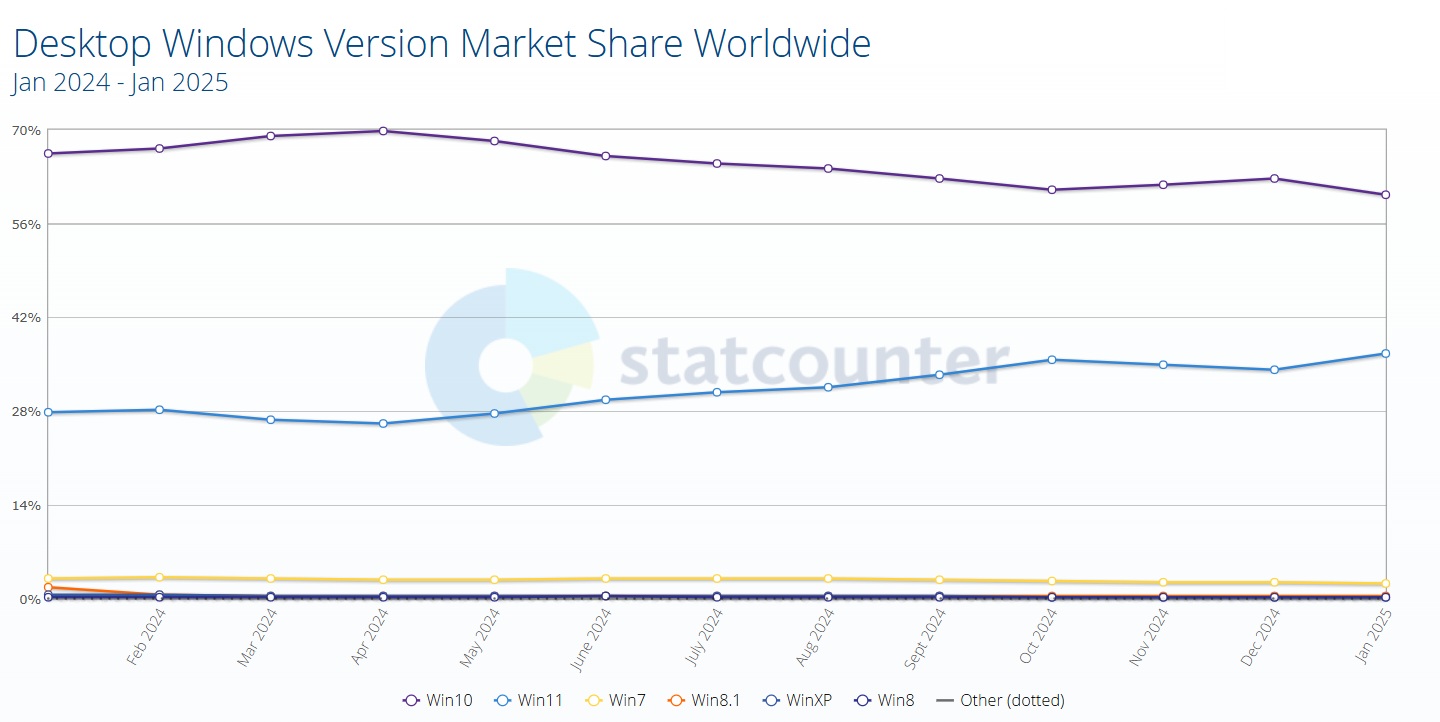
By July 2025, it’ll be exactly ten years since the debut of Windows 10. In October 2025, however, its lifespan will have come to an end, marking its ‘end-of-life’ phase.
Generally speaking, Microsoft typically offers free support for its Windows operating systems up to a specific period, focusing on newer versions after that point in terms of improvements and security updates. As per their current policy, they provide five years of comprehensive support followed by another five years of only security updates support for each version. After this duration, it’s recommended that users or businesses upgrade to the latest version to ensure ongoing security updates. Businesses can opt for expensive extended support plans for older versions, but upgrading is considered a more economical choice in the long run.
As a dedicated user of the operating system, I must admit that Windows 10 has been quite “clingy” for several reasons. From personal observations, it appears that consumers are skeptical about the volume of telemetry and online features that Windows 11 seems to impose on users, despite Microsoft’s in-shell advertisements. Furthermore, Microsoft is demanding hardware upgrades from users to access Windows 11, which can be problematic because some motherboards lack the necessary TPM 2.0 support.
There are methods to bypass Windows 11’s TPM 2.0 prerequisite, but Microsoft isn’t exactly fond of these shortcuts. Microsoft is actively implementing the TPM 2.0 hardware condition on Windows 11 installations, with the aim that this will lead users to upgrade their PCs through 2025. It seems their strategy might be effective.
According to the most recent data on StatCounter.com, there’s been a significant surge in the usage of Windows 11, pushing its share up to 36.65%, marking a new high for this operating system so far.

Compared to its predecessor, Windows 10 saw a steady drop and reached approximately 60.33%. Meanwhile, the second most widely used Windows version is Windows 7, holding roughly 2.4%. Many big businesses that rely on embedded apps and services in older Windows versions tend to opt for continuous security support payments instead of revamping their internal networks. Notably, the UK National Health Service was stuck on Windows XP for years before upgrading to Windows 10 in 2018.
As a tech enthusiast, I can’t help but anticipate the growth of Windows 10 and the potential transition to Windows 11. Microsoft and their PC manufacturing partners are eagerly expecting that the “end of life” status of Windows 10 will encourage users to upgrade to modern PCs this year. However, the ongoing trade tensions initiated by the U.S. government could potentially increase the cost of electronics due to tariffs and restrictions on chip manufacturers and PC builders primarily in Asia. This situation might create unexpected challenges for Microsoft and its partners as they strive to expand Windows 11’s market share, particularly when it comes to implementing cutting-edge AI features that are generating a lot of buzz among consumers. It will be fascinating to see how these companies navigate this complex landscape.
In contrast to expectations, Valve’s monthly Steam Hardware Survey for January reveals an unexpected shift in the market share. While Windows 11 initially holds a substantial lead, it appears to have shed a tiny portion of its market share, with MacOS and even Windows 10 gaining ground slightly. Despite this minor setback, Windows 11 still dominates as the preferred gaming operating system on PCs, accounting for approximately 54% of the total share. Across all platforms surveyed by Steam, Windows maintains a strong position, representing around 96%. Notably, the introduction of the Steam Deck has boosted Linux’s presence in the overall list, with it capturing nearly 2%, surpassing MacOS at 1.4%.
Read More
- PI PREDICTION. PI cryptocurrency
- Gold Rate Forecast
- WCT PREDICTION. WCT cryptocurrency
- Guide: 18 PS5, PS4 Games You Should Buy in PS Store’s Extended Play Sale
- LPT PREDICTION. LPT cryptocurrency
- Playmates’ Power Rangers Toyline Teaser Reveals First Lineup of Figures
- Shrek Fans Have Mixed Feelings About New Shrek 5 Character Designs (And There’s A Good Reason)
- FANTASY LIFE i: The Girl Who Steals Time digital pre-orders now available for PS5, PS4, Xbox Series, and PC
- SOL PREDICTION. SOL cryptocurrency
- Solo Leveling Arise Tawata Kanae Guide
2025-02-03 07:09